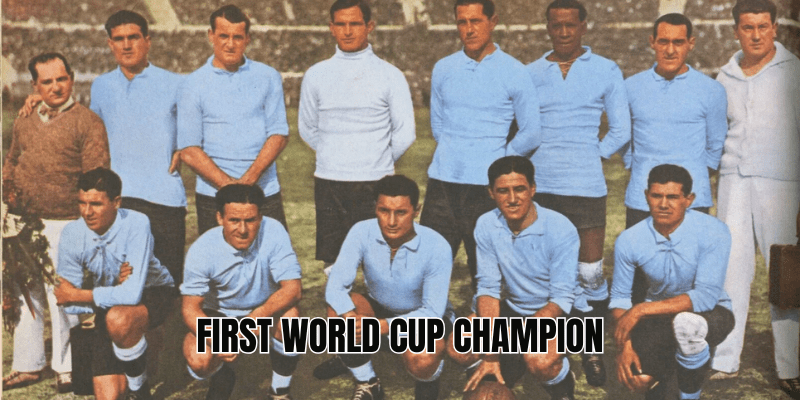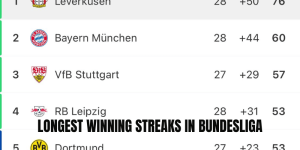The first World Cup champion was crowned—and it wasn’t a European power, it was Uruguay. This tiny South American nation rose above the odds, hosted the tournament, and etched its name into the annals of sport forever. In this article, AnnuGoal will take you on a journey through that groundbreaking tournament, spotlight Uruguay’s journey to glory, and explore the lasting legacy of being the first World Cup champion.
The Birth of a Global Tournament
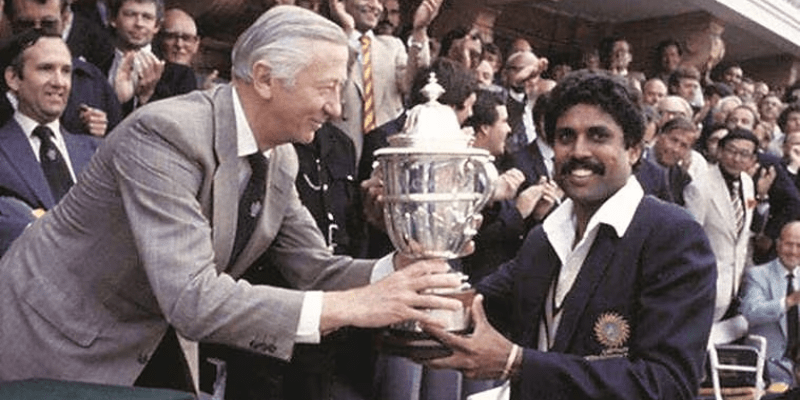
Before 1930, international football was largely confined to regional competitions and the Olympic Games. But as the popularity of the sport soared, FIFA sought its own global contest. At the Congress in Amsterdam in 1928, the decision was made: the world would have its own football tournament, separate, celebrating its centenary of independence in 1930 and already a dominant force in international football (having won Olympic gold in 1924 and 1928), won the bid to host.
Because of travel difficulties and costs, no qualifying rounds were held: FIFA extended invitations to national associations to participate. Ultimately, 13 teams answered the call—seven. Every match was played in Montevideo across three stadiums: Estadio Centenario (built especially for the tournament), Parque Central, and Pocitos.
The tournament format: four groups, with winners advancing to semi-finals, culminating in a final. The stage was set. edia])
Uruguay’s Road to Becoming the First World Cup Champion
Group Stage Showings
Uruguay was placed in Group 3 with Peru and Romania. They opened cautiously, then surged, beating both to top the group comfortably. Meanwhile, Argentina, the United States, and Yugosla.
The Semifinals: Route to the Final
In the semis, Uruguay faced Yugosla. Uruguay dispatched Yugoslavia emphatically with a 6–1 win, while Argentina handled the U.S. also 6–1. It set up a South American blockbuster final between Uruguay and Argentina—a rematch of the 1928 Olympic final (which Uruguay had won).
The Final: 30 July 1930
In front of over 90,000 fervent fans at Estadio Centenario, Uruguay and Argentina battled for global supremacy. The match was tense. Guillermo Stábile gave Argentina a 2–1 lead by half-time.
In the second half, Uruguay flipped the script. Pedro Cea leveled, Santos Iriarte put La Celeste ahead, and Héctor Castro closed the scoring near full-time to make it 4–2. Uruguay was the first World Cup champion. The victory was celebrated across the country; July 31 was declared a national holiday.
Legacy, Records, and Symbolism of the First Champion
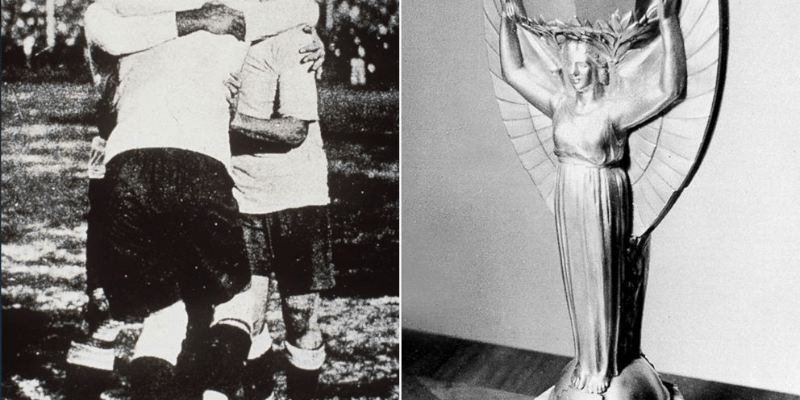
Stat Highlights & Records
- Uruguay won all four matches in that tournament, scoring 15 goals and conceding only 3. That +12 goal difference remains one of the most dominant averages.
- Argentina’s Guillermo Stábile was the top scorer with 8 goals, though his team fell short in the final.
- The tournament featured 18 matches and a total of 70 goals, giving an average of roughly 3.89 goals.
What It Meant for Uruguay and Global Football
Becoming the first World Cup champion endowed Uruguay with a mythic status. Already a powerhouse in Olympic football, the victory confirmed their mastery on the world stage. The win catalyzed football’s global expansion, as national associations saw that even smaller nations could host and win the world’s premier tournament.
The tournament’s success also reinforced the importance of national pride and football identity—Uruguay’s “garra charrúa” (the fighting spirit) became legendary. Their achievement still resonates today among football fans and historians alike.
Why Uruguay and Not a European Giant?
Several factors converged to ensure Uruguay secured this historic place:
- Host advantage and centennial momentum. Uruguay’s bid was bolstered by their centenary celebration in 1930, making the event a national priority. They were also already highly respected in international football.
- Travel barriers for Europe. Many European nations declined to participate due to the cost and logistical challenges of sailing to South America amid the Great Depression. Only a handful made the trip.
- Football pedigree. Uruguay had already won Olympic gold in 1924 and 1928 under FIFA’s umbrella, giving them legitimacy as a world-class side.
- FIFA’s structure and design. Inaugurating the World Cup was intended to centralize world football under a global tournament. Uruguay’s willingness to host and absorb costs made them a logical choice.
Thus, it’s no fluke: Uruguay’s footballing strength, combined with circumstance and vision, aligned to make them first champions.
Recognition, Memory & Modern Resonance
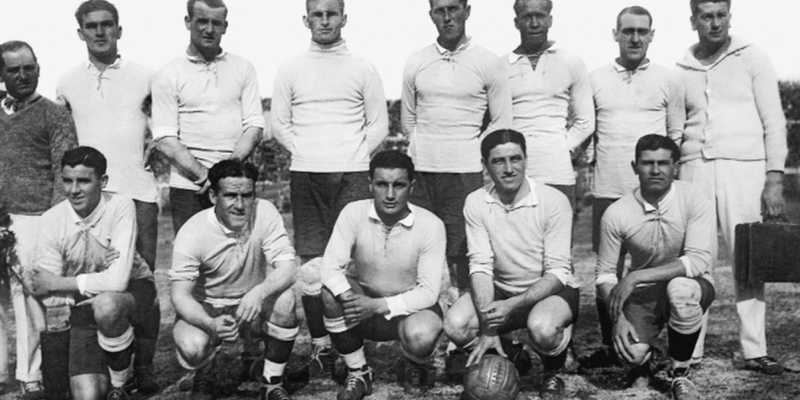
The name Uruguay, in many football circles, is almost synonymous with the phrase first World Cup champion. Across decade upon decade, coaches, pundits, and fans invoke that 1930 victory when reflecting on football’s early expansion and South America’s legacy.
In Uruguay, that first title is more than history—it’s identity. The nation celebrates both that triumph and the later 1950 title (the famous “Maracanazo”) with equal reverence. Their early success is also why Uruguay’s football history is often considered disproportionally grand for a small country.
In worldwide discourse, Uruguay’s place as the pioneering first World Cup champion often serves as a benchmark: before European dominance, before global television, before commercial football – there was Uruguay, hosts, warriors, and victors.
Final Thoughts
Being the first World Cup champion is not just a footnote in football’s history—it’s a crown worn for eternity. Uruguay’s 1930 triumph laid the foundation of the World Cup as the ultimate global sports festival. Their achievement inspired future generations, carved identity into a small nation, and forever shaped how football is remembered.
In this article, AnnuGoal has guided you through the context, drama, and enduring impact of that first title. Dive dee. And if you ever wonder who first became the World Cup champion, remember: it was Uruguay.
